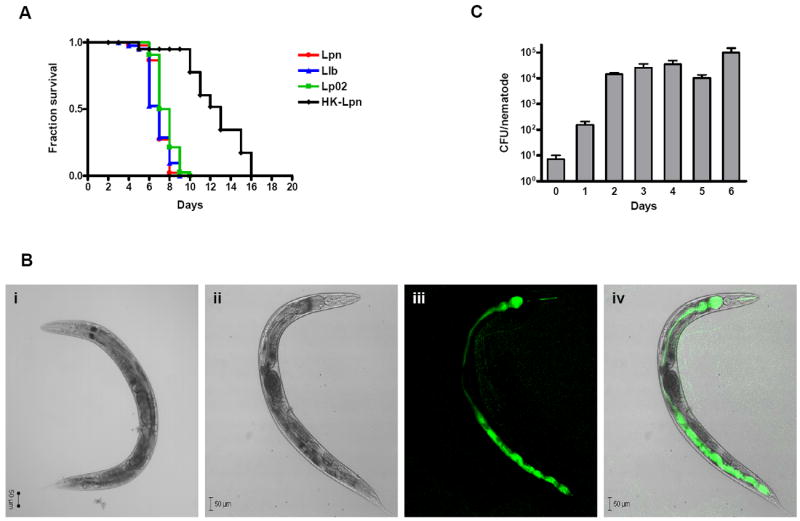Figure 1.

Survival of C. elegans fed on Legionella. (A) Kaplan-Meier survival plots of N2 nematodes fed L. pneumophila Philadelphia-1 (Lpn; circles, n=45), L. longbeachae ATCC 33462 (Llb; triangles, n=43), L. pneumophila Philadelphia-1 derivative Lp02 strain (squares; n=44), and heat-killed L. pneumophila Philadelphia-1 (HK-Lpn; diamonds, n=28). Nematode loss was not a significant consideration in the survival assay as the nematodes remained mostly within the bacterial lawn. P < 0.0001 by pairwise comparison by the log-rank test of the each of the strains (Lpn, Llb, Lp02) versus heat-killed. P ≤ 0.01 by pairwise comparison by the log-rank test for each of the strains Lpn and Llb vs. Lp02. Data is representative of one of three independent experiments. (B) Confocal microscopy of Legionella colonization and persistence in wild-type N2 nematodes. DIC images of wild-type N2 nematodes fed (i) heat-killed or (ii-iv) live GFP-expressed L. pneumophila KB130 for five days. (ii) Bright-field image using DIC optics; (iii) KB130 producing GFP colonizing the length of intestinal tract; and (iv) merged image of ii and iii. (C) Bacterial intestinal load of L. pneumophila KB130 within wild-type N2 nematodes (CFU/nematode) over a period of six days. Bacterial loads were determined in triplicate from approximately ten disrupted worms. Data represent mean ± SEM.
